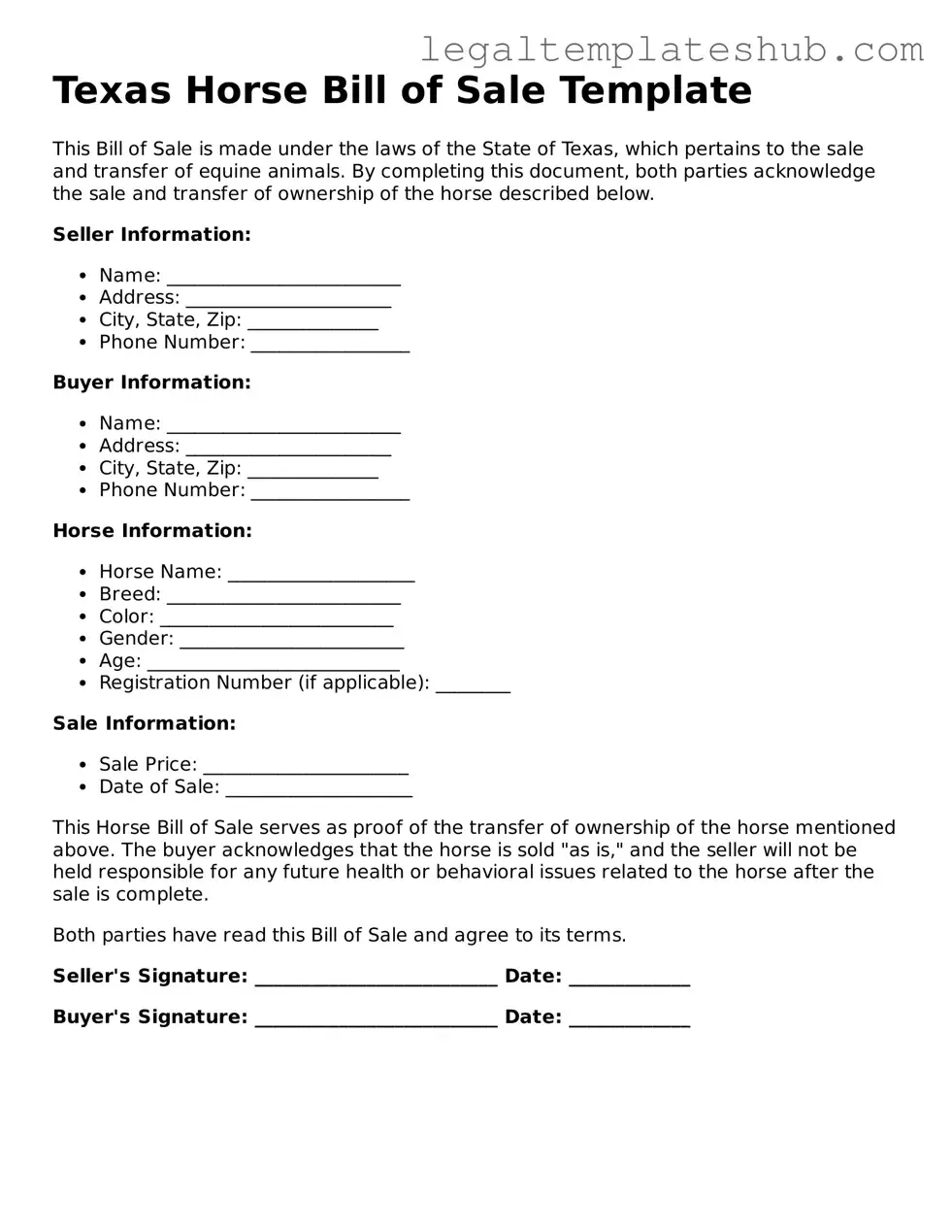Printable Horse Bill of Sale Document for Texas
The Texas Horse Bill of Sale form is a legal document that facilitates the transfer of ownership of a horse from one party to another. This form outlines essential details such as the horse's description, sale price, and the terms of the sale, ensuring both buyer and seller are protected. To complete your transaction smoothly, fill out the form by clicking the button below.
Access Editor
